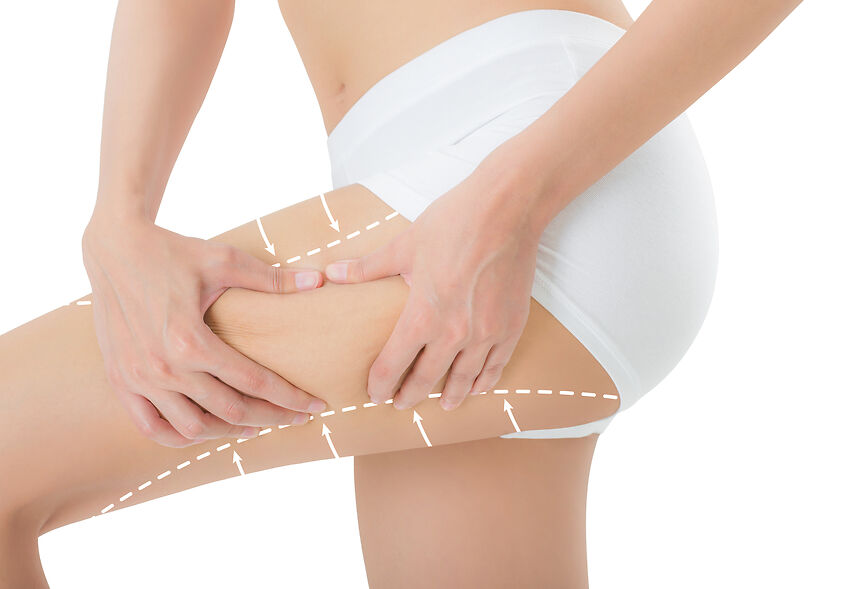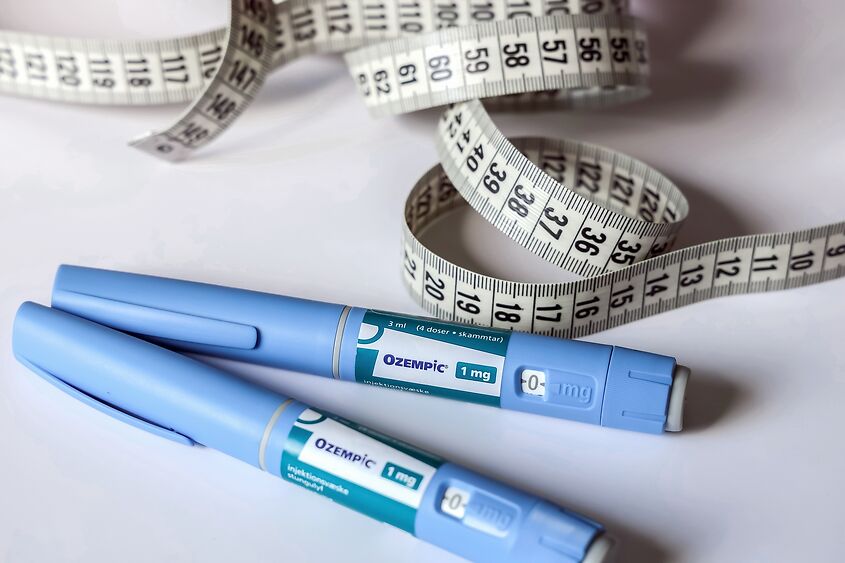With the rise of obesity rates in America, both men and women have been seeking solutions for weight loss. Over the past few years, Ozempic has become a “miracle drug,” being used by many to lose weight. In addition to the weight loss induced by Ozempic, patients are witnessing swift fat reduction across their bodies, resulting in the development of loose and excess skin and an accelerated aging appearance. Consequently, there has been a surge in the demand for procedures performed by plastic surgeons to counteract these effects.
 Photo Credit: Courtesy of Shutterstock
Photo Credit: Courtesy of Shutterstock
What Is Ozempic And How Does It Work?
Ozempic, along with Wegovy, belongs to a class of medications known as semaglutides. Ozempic was approved by the FDA for type 2 diabetes and was also found to cause weight loss. These medications mimic the natural hormone GLP-1 (Glucagon-like peptide-1), which plays a crucial role in appetite regulation and weight loss. As a result, these medications have gained widespread attention for their efficacy in reducing body weight and improving metabolic parameters.
What Effects Will It Have On My Body And How Can It Be Fixed?
Rapid fat and muscle loss often accompanies long-term use of Ozempic. With this, patients develop excess skin along different areas of the body. The term “Ozempic Face” describes the characteristic changes to the face and similarly, the term “Ozempic Body” describes the various changes seen along the body. This is not only due to volume and fat loss, but also the loss of collagen, elastin, and essential nutrients. I provide a more in-depth exploration of these effects below:
Breasts: Breasts are often composed of fat and glandular tissue. With the loss of fat, the breasts will decrease in size. With the rapid loss of volume, the skin along the breast will also get loose and droopy or ptotic – similar to changes seen following pregnancy and breastfeeding. To address these issues, our usual approach involves combining breast augmentation through the use of implants to enhance volume, paired with a breast lift to eliminate excess tissue and rejuvenate the youthful contour of the breast.
Arms: With weight loss and volume deflation, the upper arms get thinner and have an improved contour. However, excess skin along the upper arm develops, which can give the appearance of aging – something that cannot be improved with exercise. A combined procedure of liposuction, to remove any remaining fat, with a Brachioplasty (arm lift), is used to give a tightened and more youthful appearance to the arms.
Abdomen: Similar to changes following pregnancy, weight loss frequently results in the development of loose skin along the abdomen, coupled with lingering pockets of residual fat. To address the abdomen, a combination of Abdominoplasty, Liposuction, and Muscle Plication is performed. The abdominoplasty removes excess skin, liposuction removes excess fat to help improve the contour of the waist, and muscle plication aids in repairing a diastasis or muscle laxity that develops over time.
Buttock: Following weight loss, patients notice a decrease in buttock volume along with droopiness or ptosis in the gluteal region, accompanied by excess skin. To address these concerns, a body lift is performed, often combined with or serving as an extension of an abdominoplasty. This comprehensive procedure involves the removal of excess skin along the lower body through a discreetly placed incision, ultimately enhancing the overall appearance of the buttocks.
 Photo Credit: Courtesy of Shutterstock
Photo Credit: Courtesy of Shutterstock
Thighs: Weight loss may result in unwanted excess skin along the thighs, hindering patients from confidently wearing shorts due to sagging skin. This concern is effectively addressed through a thigh lift, a procedure that combines liposuction and skin removal to target the medial aspect of the thigh. Thus delivering a tighter and more youthful appearance.
When Is It Safe To Undergo Surgery When Taking Ozempic?
Undergoing plastic surgery while on Ozempic is considered safe, with specific prerequisites to meet. It is crucial to ensure you have reached your target or goal weight and have maintained it for a period of 3 to 6 months. This verifies your ability to sustain weight through a healthy lifestyle, both pre-and post-operatively. Additionally, your doctor must assess your blood levels of essential nutrients, including iron, vitamin B12, fat-soluble vitamins, and protein, all of which play a pivotal role in wound healing. In instances where these levels are diminished while on Ozempic, it is advisable to postpone surgical interventions until nutritional optimization is achieved.
Are There Any Precautions Before Surgery?
Ozempic's potential to delay gastric emptying raises concerns during surgeries conducted under anesthesia due to the heightened risk of gastric regurgitation. The current guidelines from the American Society of Anesthesiology focus on minimizing this risk for patients using such medications. According to their recommendations, patients on daily dosing should discontinue Ozempic one day before surgery, while those on weekly injection dosing should cease its use one week prior. In cases where discontinuation is not feasible, extending the pre-operative fasting period from the standard 8 hours to 24 hours or longer is suggested to allow for more thorough emptying of gastric contents.
 Photo Credit: Courtesy of Natalia Varlei/Shutterstock
Photo Credit: Courtesy of Natalia Varlei/Shutterstock
Should I Continue Using The Medication After Surgery?
Studies have shown that when Ozempic or Wegovy are no longer taken, patients can gain at least some of their weight back. As a result, we recommend maintaining your dose after surgery to keep your surgical results. However, it is always important to follow your doctor’s recommendations.
For more information, visit Dr. Frank Lalezar's social media:





















